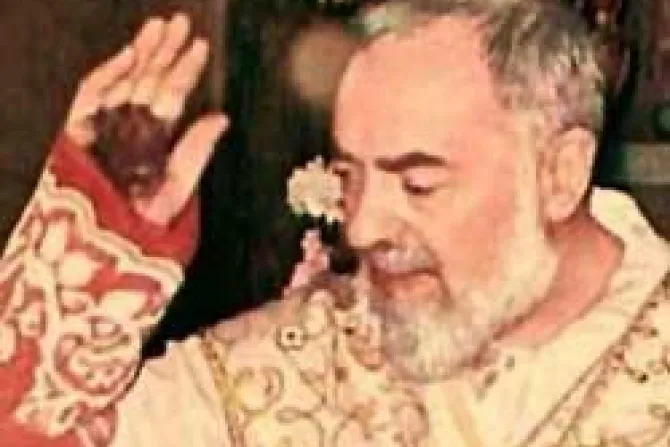Jan 8, 2008 / 07:12 am
Relatives are strongly opposing the planned exhumation and display of the body of St. Padre Pio, the twentieth-century Italian priest renowned for his stigmata and preternatural powers.
Saint Pio’s niece, Pia Forgione, and her eight children have begun legal action to stop the exhumation of the saint’s body, which is planned to be displayed later this year for pilgrims to venerate, according to ANSA. The family’s lawyer, Francesco Traversi, who also heads an association of Padre Pio devotees, said they were trying to prevent the saint’s body from being “profaned.”
Archbishop Domenico Umberto D'Ambrosio said permission for the exhumation had been granted by his “higher authorities” and was authorized by the Vatican’s Congregation for the Causes of Saints. The exhumation is part of many initiatives planned to commemorate the anniversary of the saint’s death, which took place 40 years ago this September.
The saint’s body is planned to be displayed for several months, after which it will be returned to the tomb in Santa Maria delle Grazie church in San Giovanni Rotondo, which neighbors the friary where Saint Pio lived.
“I am convinced that we all have the duty to allow future generations the chance to venerate the mortal remains of Saint Pio of Pietrelcina and to conserve them as well as possible,” Archbishop D’Ambrosio said during a Mass on Sunday night.
The lawyer for Padre Pio’s relatives accused the archbishop of acting in a most “uncivilized” way and without “any specific mandate.” Alluding to the ecclesiastical persecution Padre Pio is reputed to have suffered during his life, Traversi said that the archbishop “will not succeed in his attempt to re-crucify Padre Pio by putting his remains on display.”
Padre Pio, whose real name was Francesco Forgione, was born in 1887 and died in 1968. He is reputed to have borne the stigmata, the wounds of Christ’s crucifixion, for fifty years on his hands, feet, and side. His fellow friars credited him with more than a thousand miraculous cures. He was also said to have emitted the scent of flowers and to have possessed the ability to bilocate, that is, to be in two places at once.
The saint was shunned by church authorities and recognized only after massive popular devotion to him. He is especially popular in Australia and Ireland.
Padre Pio’s shrine draws close to one million pilgrims each year, and the hospital he founded in San Giovanni Rotondo is one of the biggest in southern Italy.


